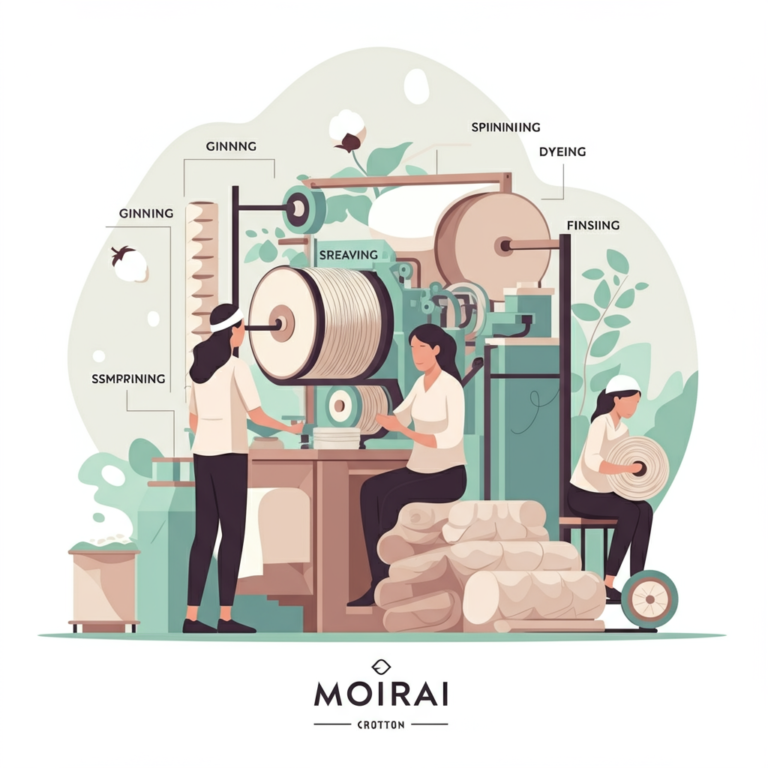
Cotton is plentiful and economically produced, producing cotton goods comparatively economical. Cotton fabrics range between light-weight voiles and laces to large sailcloths and thick-piled velveteens, suitable for an incredible number of donning attire, household furnishings, and industrial utilizes. Cotton textiles could be extremely long lasting and immune to abrasion. It accepts several dyes, is frequently washable, and will be ironed at somewhat significant temperatures. Cotton is comfortable to dress in as it absorbs and releases humidity quickly.
As a result of my work agenda, I would like a totally dark area to relaxation during the day. I as opposed quite a few blackout curtains from diverse manufacturers and finally chose TwoPages—and it did not disappoint!
Cotton's Actual physical characteristics make it a favorite choice for garments as a consequence of its softness, breathability, and significant absorbency.
The completed product or service is sent again to India at European shipping and delivery costs, Again on British ships. The captains, officers, sailors of those ships, whose wages has to be paid out, are English. The only real Indians who income undoubtedly are a couple of lascars who do the filthy Focus on the boats for the couple cents every day.
Mohamed Ali Pasha approved the proposition and granted himself the monopoly around the sale and export of cotton in Egypt; and afterwards dictated cotton need to be grown in choice to other crops.
Cotton being picked by hand in India, 2005 Most cotton in The usa, Europe and Australia is harvested mechanically, both by a cotton picker, a machine that gets rid of the cotton from your boll without harming the cotton plant, or by a cotton stripper, which strips your complete boll from the plant.
With its higher tensile energy and resilience, cotton proves to be a sturdy and dependable choice for several textile applications. Cotton fibers have a amazing dry tensile toughness starting from 21 to 34 grams for every tex, making sure their capability to withstand rigidity and strain.
Wool continued to dominate the ecu marketplaces, but cotton prints were being released to Britain because of the more info East India Company within the 1690s.[17] Imports of calicoes, affordable cotton fabrics from Kozhikode, then often called Calicut, in India, found a mass sector among the very poor. By 1721 these calicoes threatened British brands, and Parliament handed the Calico Act that banned calicoes for clothing or domestic functions. In 1774 the act was repealed While using the creation of equipment that permitted for British brands to contend with Jap fabrics.[37]
Cotton vegetation are subject matter to conditions caused by a variety of pathogenic fungi, microbes, and viruses and to wreck by nematodes (parasitic worms) and physiological disturbances also classified as conditions. Losses are estimated as significant as 50 per cent in certain African nations and in Brazil. Since young seedlings are Specifically delicate to attack by a complex of illness organisms, cure of seeds before planting is widespread.
The Mughals introduced agrarian reforms such as a new income program that was biased in favour of greater price funds crops which include cotton and indigo, furnishing point out incentives to develop money crops, Along with increasing industry desire.[26]
Agriculture demonstrates an excellent choice together with significance more than the country as The full country is dependent on agriculture and agricultural activiti
In addition, India is the globe's 3rd greatest exporter of Textiles and Attire. India ranks Amongst the top 5 world-wide exporters in many textile categories, with exports envisioned to succeed in US$a hundred billion.
they want esteem and anyone's want. A concern could also be considered as Associate in Nursing furthermore with
The term "cotton" has Arabic origins, derived with the Arabic term قطن (qutn or qutun) and that is ultimately derived within the Hebrew כֻּתֹּנֶת kuttṓnĕṯ, ironically which means a outfits fabricated from linen. This was the usual term for cotton in medieval Arabic.[6] Marco Polo in chapter two in his e-book, describes a province he phone calls Khotan in Turkestan, today's Xinjiang, wherever cotton was grown in abundance.